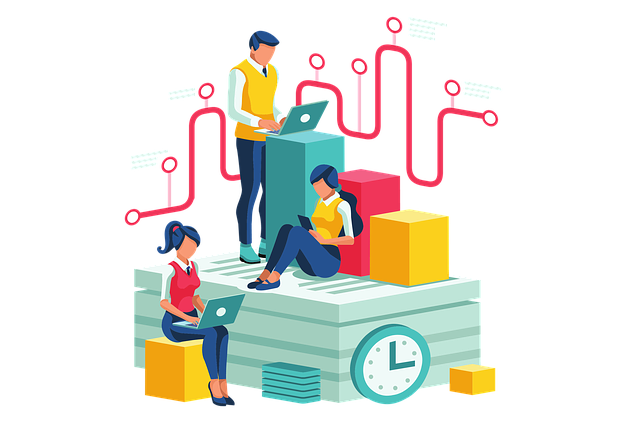AI scheduling conflict resolution tools revolutionize drone mapping by integrating aerial data collection with GIS, enabling drones to autonomously navigate landscapes, capture high-res images, and generate detailed 3D models without human intervention. These technologies optimize flight paths, manage weather conditions, and adhere to regulatory restrictions in real-time, ensuring a seamless and conflict-free mapping process. The result is precise, up-to-date maps that empower professionals in urban planning, infrastructure development, and environmental monitoring with crucial data for informed decisions, enhancing efficiency and accuracy in property mapping.
“Revolutionize property mapping with AI landscaping drones! This cutting-edge technology offers precise, efficient data collection, transforming traditional mapping methods. In this comprehensive guide, we explore the power of artificial intelligence in drone mapping. From understanding AI scheduling and conflict resolution to discovering how these tools enhance property assessments, you’ll delve into best practices for seamless integration. Optimizing your mapping process has never been easier.”
- Understanding AI Scheduling and Conflict Resolution in Drone Mapping
- The Role of AI Tools in Efficient Property Mapping and Data Collection
- Overcoming Challenges: Best Practices for Integrating AI with Drone Technology
Understanding AI Scheduling and Conflict Resolution in Drone Mapping

In the realm of drone mapping, AI scheduling and conflict resolution tools play a crucial role in ensuring efficient and accurate property mapping. These advanced technologies enable seamless integration of aerial data collection with precise geographic information systems (GIS). By leveraging AI algorithms, drones can autonomously navigate complex landscapes, capturing high-resolution images and generating detailed 3D models without human intervention. This not only enhances the speed and cost-effectiveness of mapping operations but also reduces potential errors associated with manual scheduling and data interpretation.
Conflict resolution in drone mapping involves addressing challenges such as overlapping flight paths, weather conditions, and regulatory restrictions. AI-powered tools employ sophisticated algorithms to optimize drone schedules, dynamically reroute flights, and manage conflicts in real-time. This ensures that every aspect of the mapping process—from data acquisition to data processing—is streamlined and conflict-free. As a result, professionals can rely on accurate, up-to-date maps for informed decision-making, whether it’s urban planning, infrastructure development, or environmental monitoring.
The Role of AI Tools in Efficient Property Mapping and Data Collection

The integration of Artificial Intelligence (AI) into property mapping and data collection has revolutionized the way we approach land surveying and management. AI scheduling conflict resolution tools play a pivotal role in optimizing this process, ensuring efficient and accurate results. These tools can manage complex schedules, resolve conflicts arising from overlapping tasks, and streamline data gathering procedures. By leveraging machine learning algorithms, drones equipped with AI technology can autonomously navigate through diverse terrains, capturing high-resolution imagery and spatial data with remarkable precision.
This advanced capability not only enhances the speed of data collection but also improves the overall quality of property maps. With AI, surveyors can automate repetitive tasks, freeing up time to focus on more intricate aspects of mapping. Moreover, AI scheduling tools enable better resource allocation, minimizing delays caused by conflicts and ensuring that each area receives adequate attention during the mapping process.
Overcoming Challenges: Best Practices for Integrating AI with Drone Technology

Integrating Artificial Intelligence (AI) with drone technology for property mapping offers immense potential, but it comes with challenges. One significant hurdle is managing AI scheduling conflict resolution tools effectively. Drones equipped with AI algorithms can collect vast amounts of data, but coordinating their flight paths and ensuring seamless data integration requires careful planning. Overcoming this involves precise scheduling, where AI algorithms optimize drone deployment, minimizing interference and maximizing efficiency. Tools like advanced routing software and real-time monitoring systems play a crucial role in conflict resolution, enabling operators to adjust flight plans on the fly.
Best practices emphasize rigorous testing and continuous improvement. Rigorous pre-flight checks and weather condition considerations ensure safe and reliable operations. Additionally, integrating AI with robust communication networks is essential for quick data transfer and analysis. Regular updates to algorithms based on feedback from field operations can enhance accuracy and adaptability, making AI landscaping drone assisted property mapping a more dependable and efficient solution over time.
AI-powered drone mapping is transforming property surveying, offering unparalleled efficiency and accuracy. By leveraging AI scheduling and conflict resolution tools, professionals can streamline data collection processes, minimizing errors and maximizing productivity. As these technologies continue to evolve, integrating them into existing workflows becomes increasingly feasible, paving the way for a future where AI and drones collaborate seamlessly, revolutionizing how we perceive and interact with our surroundings.
